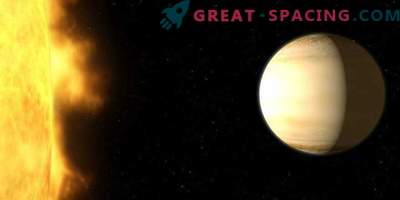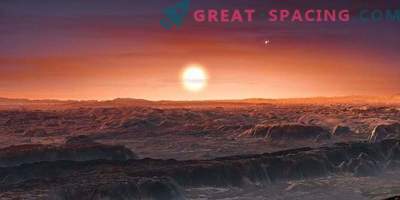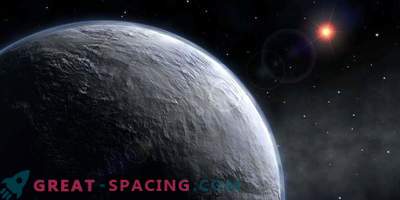
The brightness of the oceans of exoplanets, which can be seen at a great distance, according to astronomers, may be a sign of their habitability.
If you look at Earth, orbiting around the Sun, from a long distance, it, like Moon, passes through phases. The oceans of the planet reflect a large amount of light, especially when it is in the first and last quarter. Researchers believe that this may also be applicable to exoplanets.
“It seems that increasing the intensity of the glow in the first and last quarters can be an almost unconditional sign that there is an ocean on the planet,” said Tyler Robinson of the Ames Research Center at NASA in Moffett Field, California, speaking in June astrobiology conference in chicago.
Although the Earth is surrounded by many satellites, they do not provide an opportunity to view the planet entirely. Therefore, many scientists who study exoplanets have to turn to a model in order to understand what the Earth can look like if you look at it from a distant alien planet. However, such models can be very rough and need to be tested.
Scientists have tried several times to solve this problem. For example, in 1993, Carl Sagan and other researchers used observations made during a demonstration flight in 1990 of the spacecraft Galileo, created by NASA to study Jupiter, in an attempt to find signs of life on our planet. In 2009, the Moon Crater Observation and Sounding Spacecraft (LCROSS) observed the Earth in several phases, including when it was almost complete in the first and last quarters, in order to calibrate its instruments. Robinson and his colleagues analyzed this data and found out how the Earth looks in different spectra, in the range of light from infrared to ultraviolet, being in different phases. Their study was published in 2014 in the Astrophysical Journal.
“LCROSS watched Earth to calibrate, and these measurements have benefited science,” said Robinson.
The results showed that, although the smallest area of the Earth’s surface is visible in the first and last quarter, the brightness of the planet increases due to the reflection of light from its oceans. According to Robinson, in the spectrum of visible light, the brightness of the planet has increased by as much as 40 percent; in near-infrared light, the earth shone almost 80 percent brighter.
Robinson also co-authored various scientific papers that looked at similar, though less detailed, observations of the Earth using Deep Impact - NASA's space probe, which in 2005 and 2010 conducted almost similar studies of two different comets.
The LCROSS observations — the first high-resolution observations of the Earth in its first and last quarters — confirm the assumptions based on existing models, Robinson said. However, he warned that similar results obtained from observations of exoplanets cannot be unconditional signs of the presence of the ocean, since clouds and ice can also affect the brightness of the planet. Further studies of atmospheric exoplanet clouds will tell more about its possible habitability.
However, if it is proven that the vivid reflection of exoplanets is caused by its ocean, it will be a startling discovery, said Robinson.
“We concluded that the discovery of such a sign would be a significant event, and certainly proves that subsequent more careful observations of the planet were justified,” he and his colleagues wrote in their 2014 article on the results of observations obtained using LCROSS.











































